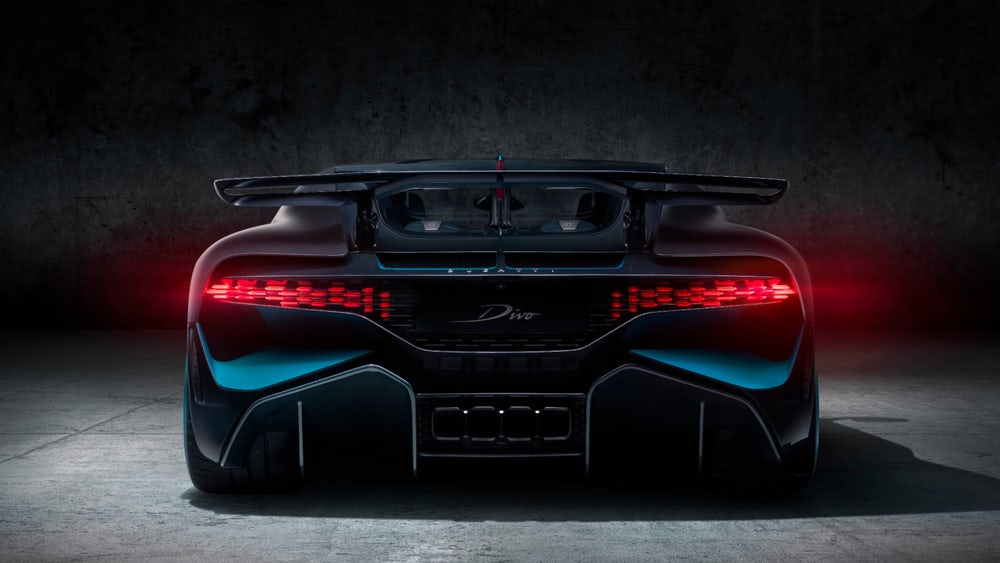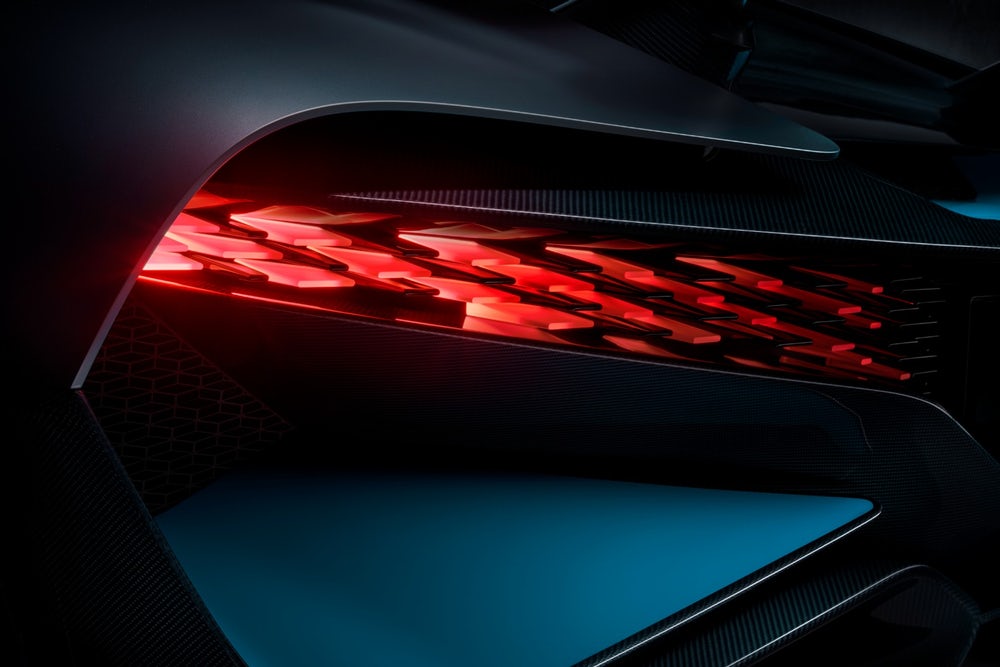French luxury car manufacturer Bugatti has unveiled its latest supercar featuring 3D printed parts at The Quail, A Motorsports Gathering.
With a price tag of €5 million, the Bugatti Divo, which displays 3D printed fin tail light, is designed for optimum handling performance on winding roads.
“The Divo is a further example of our design philosophy ‘Form follows Performance‘. In this case, the engineers and designers aimed to create a vehicle focusing on cornering speeds and lateral dynamics,” said Achim Anscheidt, Director of Design at Bugatti.

Bugatti’s aerodynamic 3D printed fin lights
Named after Albert Divo, a French Grand Prix racing driver, this supercar demonstrates the capabilities of additive manufacturing for automotive lightweighting and progressive design. Located on the rear grille of the vehicle are a cluster of 3D printed fins, 44 of which are illuminated by the brake lights.
At the outer edge of the rear grille, the fins become wider, which creates more intensive light, however, towards the center of the vehicle, the fins are slimmer to gradually fade the light. This design is used to give the Divo a distinctive appearance from the back. Furthermore, the lights display a gradient of two-tones to emphasize the aerodynamic theme of the vehicle.

Outperforming the Bugatti Chiron
The Bugatti Divo is 35 kg (77 lbs) lighter than the Bugatti Chiron, which featured the first metal 3D printed brake caliper created using an SLM 500 machine. Introduced earlier this year, the Chiron supercar’s brake caliper is made from titanium, rather than aluminum, as an end-use in-car testing component.
Despite the Chiron’s superior speed, the Divo also has 90 kg (198 lbs) more downforce than the Chiron. This force, produced by a combination of air resistance and gravity, acts on the moving Divo by pressing it down towards the ground which increases its stability.
“When I took up my position at Bugatti at the beginning of the year, I soon learnt that our customers and fans were waiting for a special vehicle which would tell a further story for the brand in addition to the Chiron,” said Stephan Winkelmann, President of Bugatti.
“To date, a modern Bugatti has represented a perfect balance between high performance, straight-line dynamics and luxurious comfort. Within our possibilities, we have shifted the balance in the case of the Divo [which] is a further project intended to thrill people and the world.”
Following its debut to a small group of selected Chiron customers, the limited 40-car production run of the Bugatti Divo was sold immediately in just a few hours.
Keep up with the latest news in 3D printing by subscribing to the 3D Printing Industry newsletter, Also, follow us on Twitter, and like us on Facebook.
Are you searching for new talent or seeking a career change? Search and post 3D Printing Jobs for opportunities and new talent across engineering, marketing, sales and more.
Featured image shows the Bugatti Divo. Photo via Bugatti.


